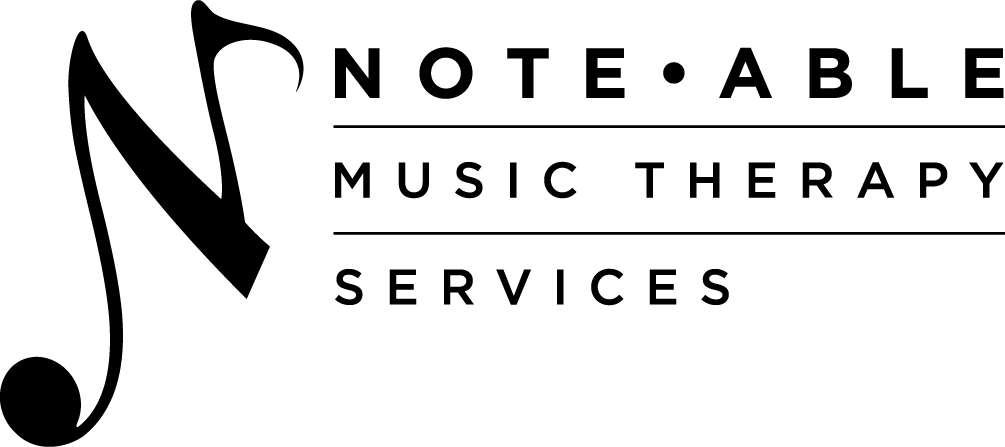Connecting through Music
Music reduces inhibitions. This means that when we are engaged in music, whether listening or creating, our defenses are down. This doesn’t necessarily mean that we always feel relaxed when engaged in music – it means we can connect to our emotions, thoughts, and beliefs more readily. We have an easier time accessing those parts of ourselves that we’ve shut down in order to survive while we are processing music.
No one chooses to be addicted to a substance. We use and abuse substances to numb ourselves from the pain of longing for something more from our lives, leaving us disconnected from ourselves and others. In the 2017 article “Connecting to Self and Others through Electroacoustic Composition and Performance: A Case Study,” music therapist Enrico Curreri describes his work with a man who had experienced multiple traumas and did not communicate expressively with others. Within Curreri’s work with the man, he found a way to tell his story through unique timbres or sounds, eventually performing a piece he composed for an audience of his peers. The man shared the deepest, most hidden parts of himself and was received with warmth and gratitude.
Music therapy is a unique and wonderful modality in which to recover the connection to yourself and create connection with others. Throughout music therapy sessions, individuals are given ways to reconnect with themselves. Because music is processed all over the brain (including areas that process memory, speech, executive functioning, emotions, and more) and our defenses are down, we can begin to feel and remember things about ourselves we forgot.
Allow me to paint a vignette
It’s a Friday, midday, and the sun is hot. I’m outside with my mask on setting up chairs, each one six-feet apart from the next. A group of adolescent boys who are in recovery from drug addiction are set to arrive shortly for their weekly music therapy session. Their transportation arrives and the boys approach, each walking separately from the others. We greet one another and settle down for a check-in, sharing our names and our current emotional state, as best we can tell.
Drumming
The boys have been exploring drums from West African countries this summer, and each week they appear more confident with the drums. We begin making music together, striking the drums softly with the palms of our hands. The group members make eye contact with one another as they play, observing motions and rhythms that weave throughout the group. For a series of moments, the group is divided in two; half of the individuals play a simple and consistent beat, and half fill in the negative spaces in sound, playing quickly and erratically.
Something shifts unspoken within the group, and everyone begins to grow in volume, striking their drums more definitively and increasing in tempo. One group member begins a rumble on his drum, alternating palms on the head of the drum as quickly as he can. The other group members follow his lead, and I cut the group off by counting down from 3 and making a grand gesture with my arms.
After a second of silence, a group member announces, “That was fire,” and another group member nods his head in agreement. The group engages in another drumming intervention together, this time listening to one drummer at a time and repeating what they choose to express, moving about the circle so each person receives several opportunities to lead. Group members discuss the experience of leading the group and having their voices heard.
Every person needs their contributions validated, and people recovering from addiction do not always have the types of relationships in their lives where they feel heard and respected. The experience of being listened to within the music therapy setting reminds us that we have a voice worth sharing, and it retrains our brains to feel confident sharing our thoughts, emotions, and beliefs with others, knowing you will be heard.
Song Sharing
Our hands are tired from drumming, and we decide to listen to music together. The adolescents are encouraged to choose a song that has shaped their life in some way. Sharing the music you love is an incredibly vulnerable experience, and it requires that you not only connect to your own preferences and memories and make a choice, but also that you feel safe to share this small, tender piece of you. One group member shared a song he used to listen to with his dad. He described the conversations they used to have together, and how he and his dad would connect. Another group member shared a song that reminded him of a break up he was experiencing, animatedly explaining how different lyrics apply to his life.
While the individuals within this group share similarities, they come from vastly different backgrounds and experiences. Music is our common ground – while we have different preferences and dislikes, we can all recognize music’s role in our lives and connect through that relationship.
My favorite thing to see in a music therapy group is passion returning to people’s eyes. When people are fully engaged in creating or talking about music, they become fully present in their bodies and with the people around them. Engaging in music with others is a reprieve from anxious thoughts and fears, and a chance to connect back to the true self. By the time the group of adolescent boys check-out, they are more expressive and vocal about how they feel.
As they walk back to their transportation, they are involved in conversation with one another, and they yell, “Bye! See you next week!” to me enthusiastically.

